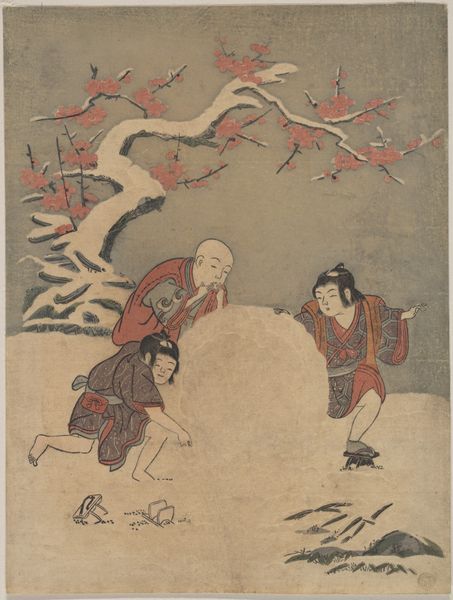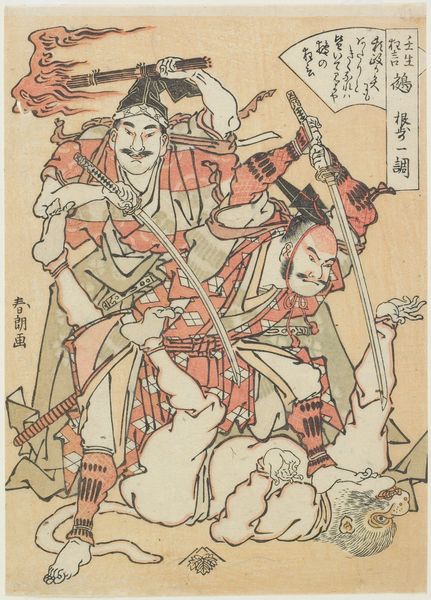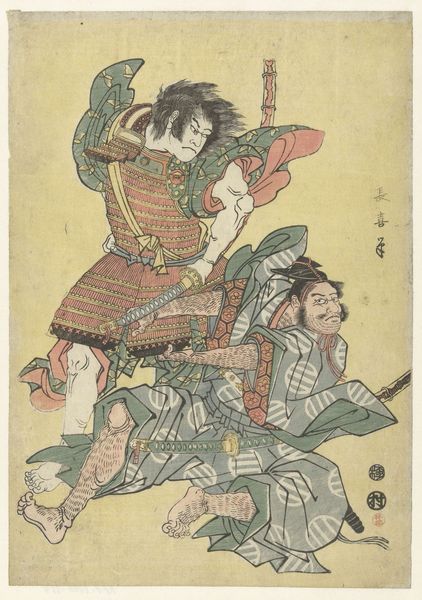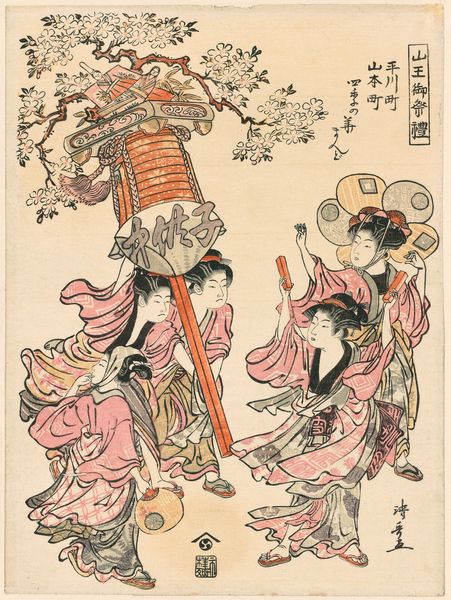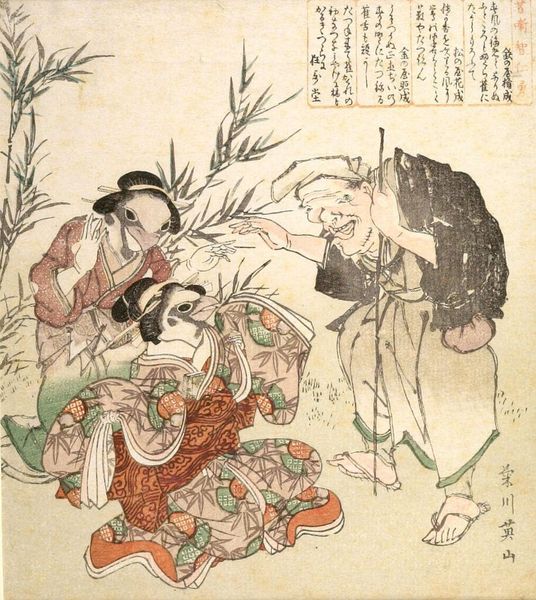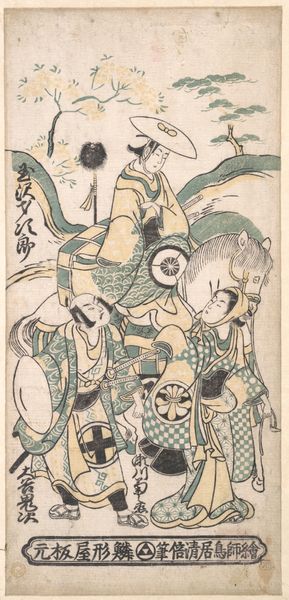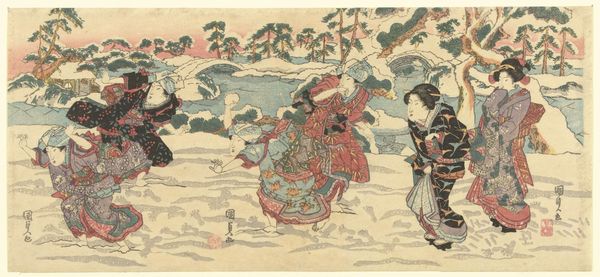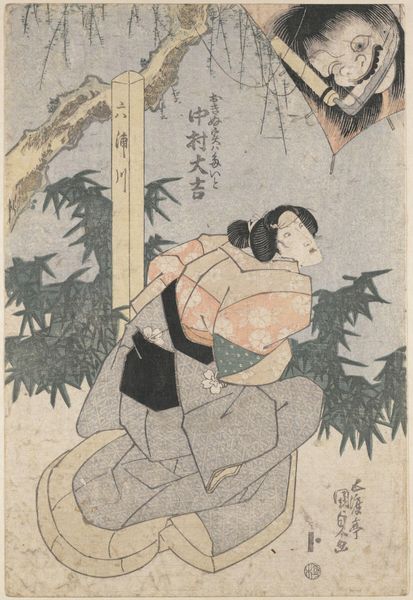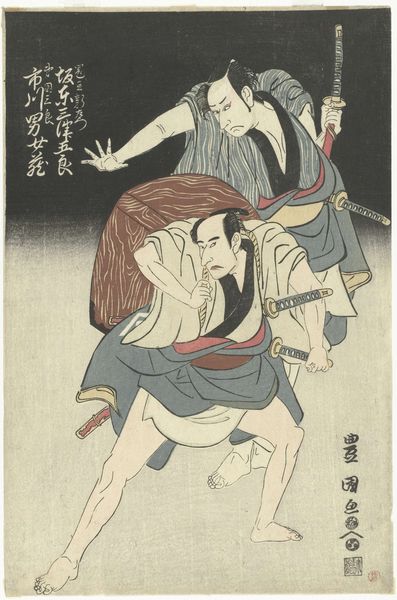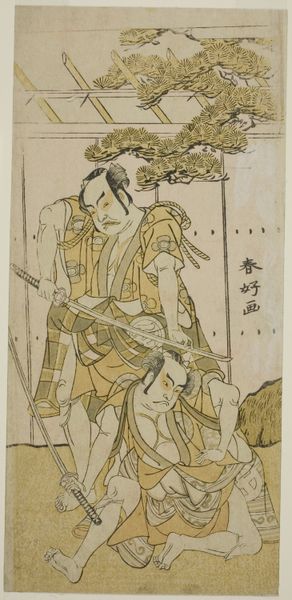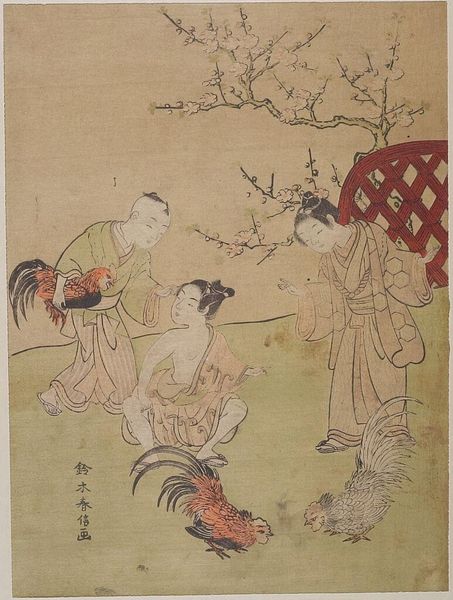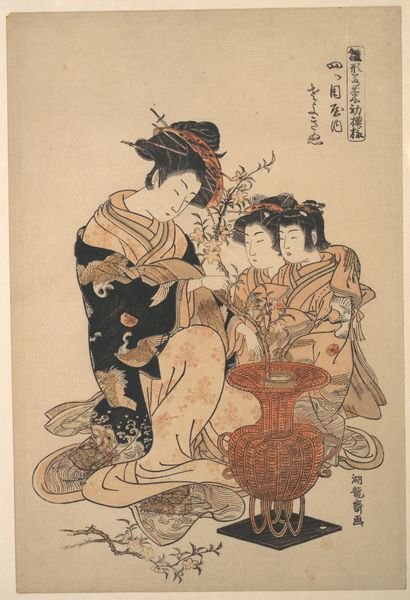
#
narrative-art
# print
#
asian-art
#
ukiyo-e
#
figuration
Dimensions: height 249 mm, width 190 mm
Copyright: Rijks Museum: Open Domain
Curator: Here we have "The Eighth Month," a print made between 1768 and 1772 by Kitao Shigemasa. Editor: This is ukiyo-e, right? It’s a scene with children playing, full of movement and delicate colors. There are lines of text, presumably Japanese, at the upper right and left and in a round cartouche at the lower right corner. How do you interpret this work? Curator: Looking closely, consider the composition first. The figures form a dynamic diagonal, contrasting with the flat, pale background dominated by what appears to be the moon. The linework defines each form precisely, with subtle gradations in color to indicate volume and texture. The flat patterns on the clothing further complicate our perception of depth. Notice also how the figures’ relative position emphasizes the implied directionality, moving from left to right and top to bottom of the plane. Do you see the spatial ambiguity created through the use of line and color? Editor: Yes, now that you point it out, I see how the overlapping forms both suggest depth and flatten the image simultaneously. Also, the moon doesn't feel "celestial," as though the plane of the sky continues infinitely. Instead it feels right against the limits of the composition. How does this visual analysis enrich our understanding of ukiyo-e prints, particularly regarding their historical role as widely accessible artworks? Curator: This effect speaks to the heart of ukiyo-e: representations of a fleeting, accessible, "floating world." It isn't an illustration of an actual event in the history of Japan, or even necessarily an identifiable scene. In fact, the abstraction inherent in the composition draws attention to the print itself, as an object with unique aesthetic qualities. Editor: I never would have parsed those aesthetic elements out of this otherwise charming, quotidian, scene of childhood play. Now it's much easier to recognize ukiyo-e visual markers in other Japanese prints and paintings. Curator: Exactly. By examining the interplay of line, color, and form, we come to a more informed aesthetic evaluation.
Comments
No comments
Be the first to comment and join the conversation on the ultimate creative platform.
